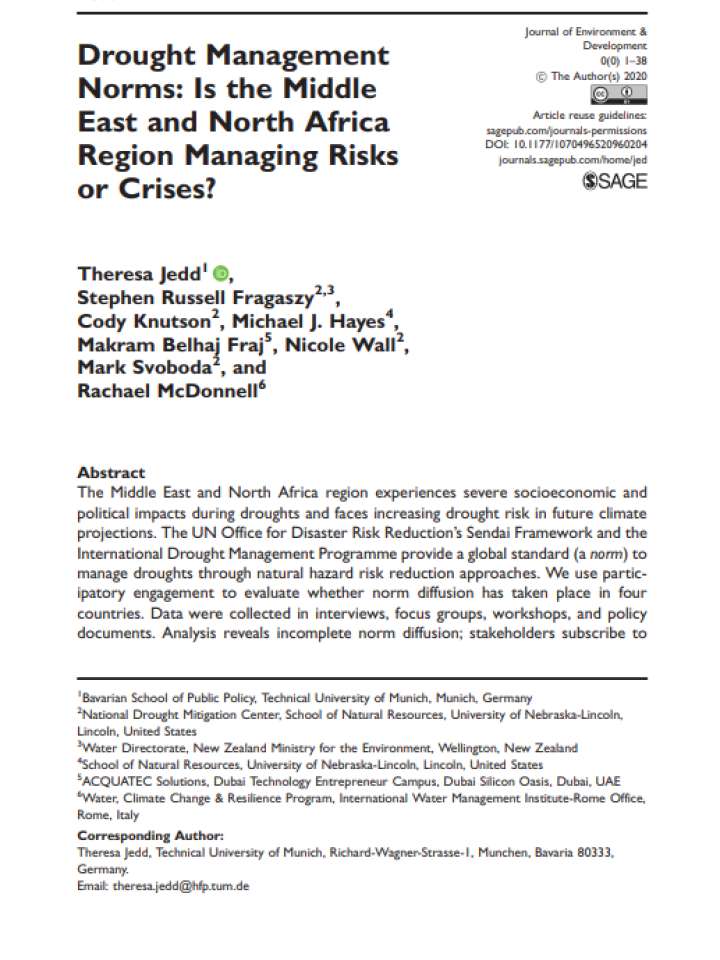Drought management norms: Is the Middle East and North Africa region managing risks or crises?
This study evaluates whether norm diffusion, in particular the diffusion of global standards to manage droughts through natural hazard risk reduction approaches, has taken place in four countries of the Middle East and North Africa region (MENA region). Data were collected in interviews, focus groups, workshops, and policy documents.
- stakeholders subscribe to relevant values, but national policies and implementation do not fully reflect the norm.
- the availability of drought early warning data is a key barrier to risk reduction.
- Further more, a drought early warning system would not be feasible or sufficient unless paired with policy measures and financial mechanisms to reduce the political and economic costs of a drought declaration.
Results hence suggest that the international presence of a norm does not ensure its incorporation into national policies. Although some key organizations within the climate, meteorological, and water resources scientific community (e.g., WMO & GWP) and the leading international hazard governance body (UNDRR) promulgate risk management norms, governments in the MENA region are still in the early stages of building these values into official policies and/or implementing them in practices.
Explore further
